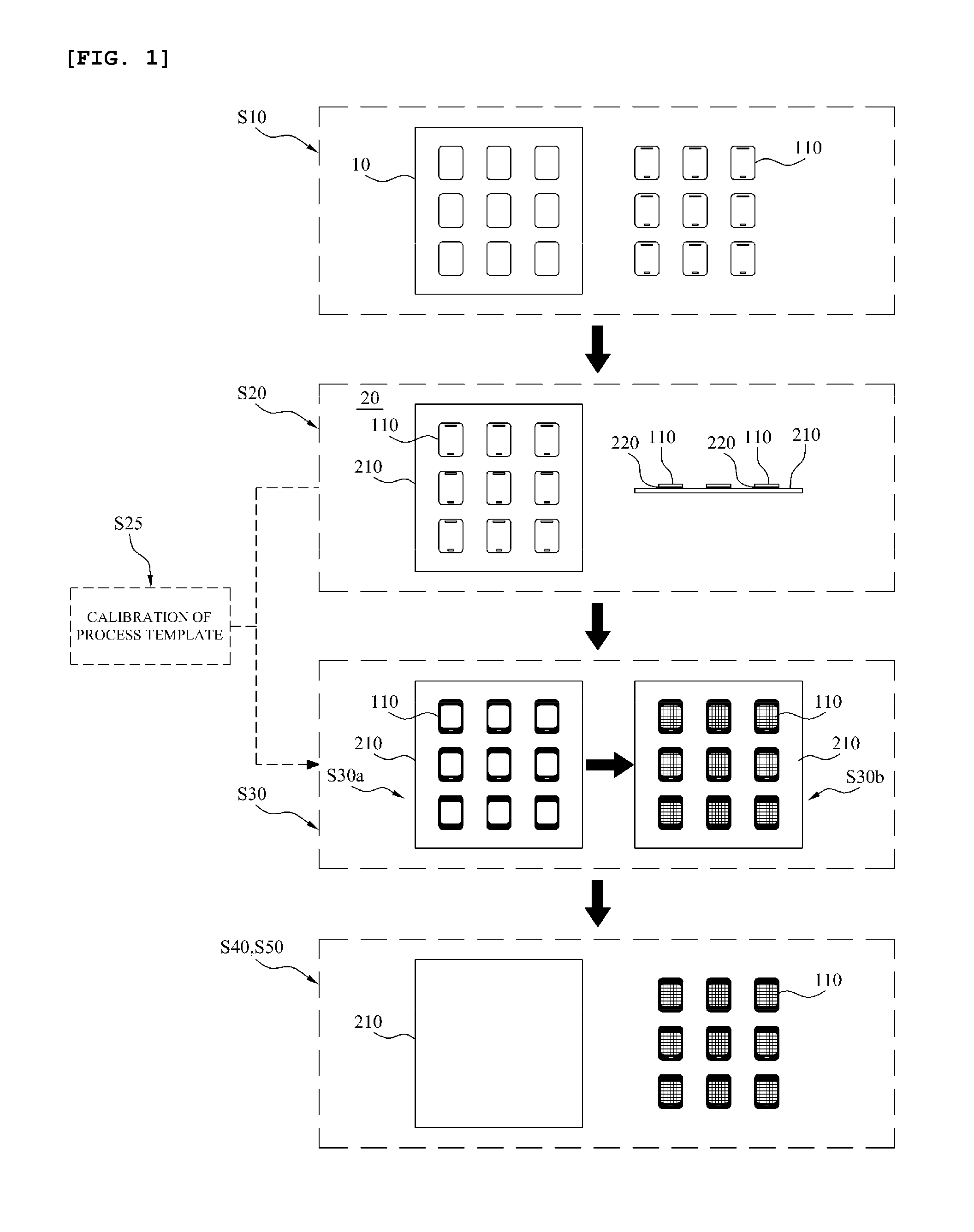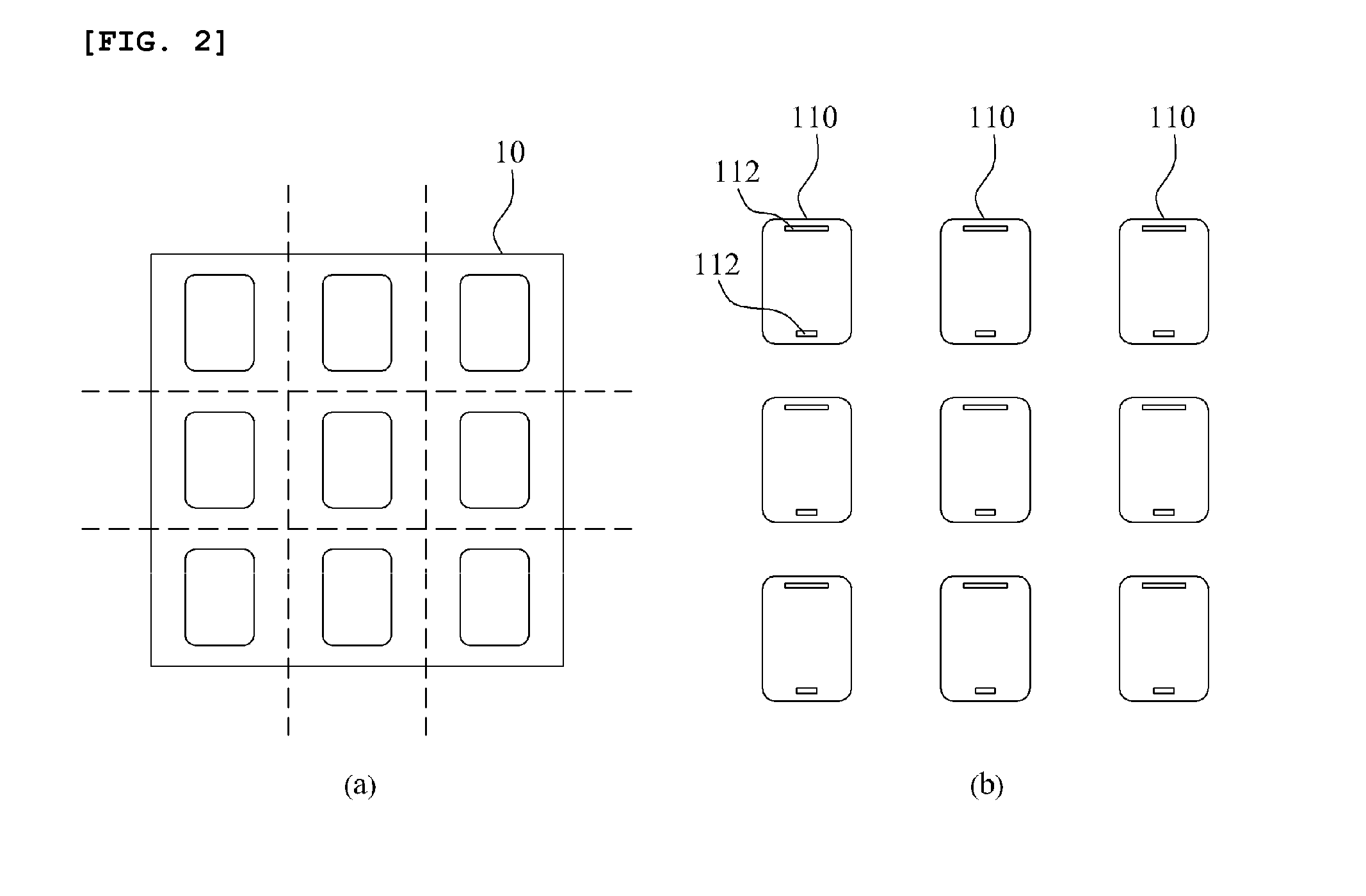However, in “the sheet method”, it is difficult to
cut the surface-strengthened bare sheet into the unit of cells, and the strength of a
cut surface, i.e., a side of the
cell substrate is lowered due to
micro cracks generated in
cutting, so that product durability is reduced and yield is lowered due to the difficulty of mechanical
machining.
But, since the
cutting and
polishing are performed basically with respect to the surface-strengthened bare sheet, it is difficult to
machine a curved side or holes inside, so that an appearance design is limited.
And, although strengthening is performed as a post process, it is difficult to secure sufficient strength, thus causing durability problem, so that the
cutting and
polishing have a difficulty in application of
mass production.
In
spite of efforts for solving problems caused in the cutting in such a “sheet method”, since the “sheet method” may not give the sufficient strength to the side of substrate
cut and exposed, the “sheet method” is limitedly applied only to the fabrication of substrates used in tablet PCs or display devices for notebook computers in which sufficient displaying area may be secured by covering the wide width of bezel with another
structural element such as a case or a frame to augment the strength of the side.
Consequently, the “sheet method” has an inherent limitation in that it may be limitedly applied only to the fabrication of substrates requiring a low lateral strength among substrates used in display devices with a minimized bezel width.
But in case the chemical strengthening is adopted in the “sheet method”, since a printed layer or a thin film layer formed previously may be damaged by a high temperature chemical material, strengthening of the side of the
cell substrate in the “sheet method” is practically impossible.
However, since, in the method disclosed in Korean
Patent Application No. 10-2013-0011942, the size of the thickness partly cut should be a maximum in order to secure the lateral strength of a cut surface, this Korean
Patent Application No. 10-2013-0011942 has a possibility that an uncut portion is inadvertently damaged during the substrate processing process in the unit of sheets.
As mentioned above, since the existing “sheet method” not only has advantages such as simplicity of process and
high productivity, but also has inherent limitations in that the supplementation of the strength of a cut surface is not sufficient and strengthening is difficult, the “
cell method” in which cell substrates is previously separated from a bare sheet to be polished and strengthened before a substrate processing process, is generally adopted as a practical solution for fabricating a substrate applicable to a
display device, such as a smartphone with high portability and a minimized bezel width.
However, the “
cell method” has also the problem such as lower productivity and price competitiveness than the “sheet method”, because the substrate processing process is performed in the state that each of the cell substrates is received in each of individual jigs in the “
cell method”.
Further, the “cell method” has a practical problem in that the cutting process is performed prior to the substrate processing process.
That is, the current cutting technique has a tolerance in a range of ±30 μm due to technical limitations.
In particular, such substrate alignment and temporary fixing should be repeatedly performed before each of plural substrate processing processes, and thereby the low productivity in the “cell method” get further deteriorated.
As a result, not only the possibility each
cell substrate itself may be directly exposed to an external environment to damage but also the incidental expense for preventing such a damage is increased at the same time.
As described above, in processing the window substrate used in a display device, such as the smartphone with high portability and a minimized bezel width, the existing “sheet method” has unsolved problems in that the processing quality of a cut surface and the lateral strength decrease, and the existing “cell method” has unsolved problems in that the productivity and the price competitiveness decrease.
 Login to View More
Login to View More 


